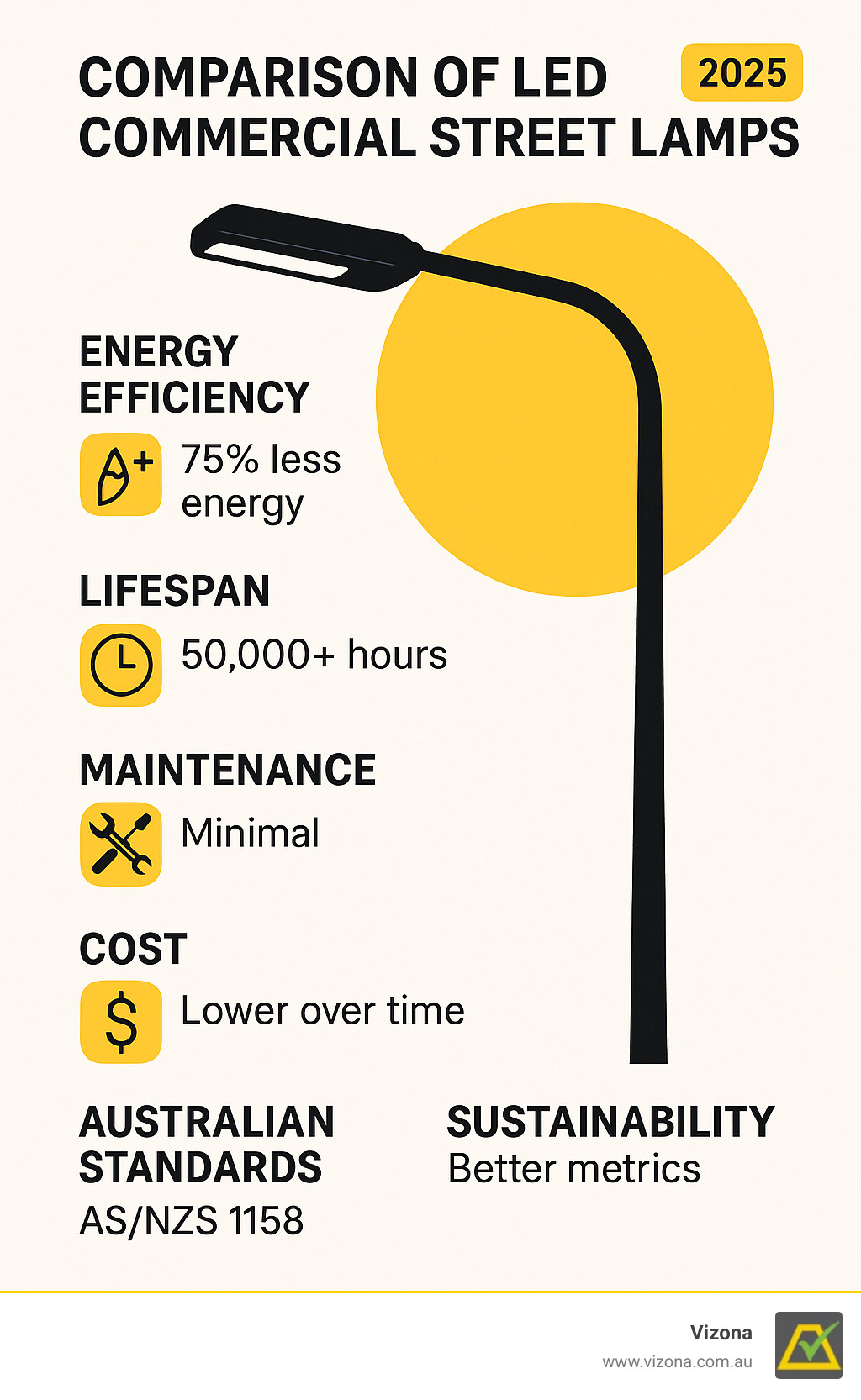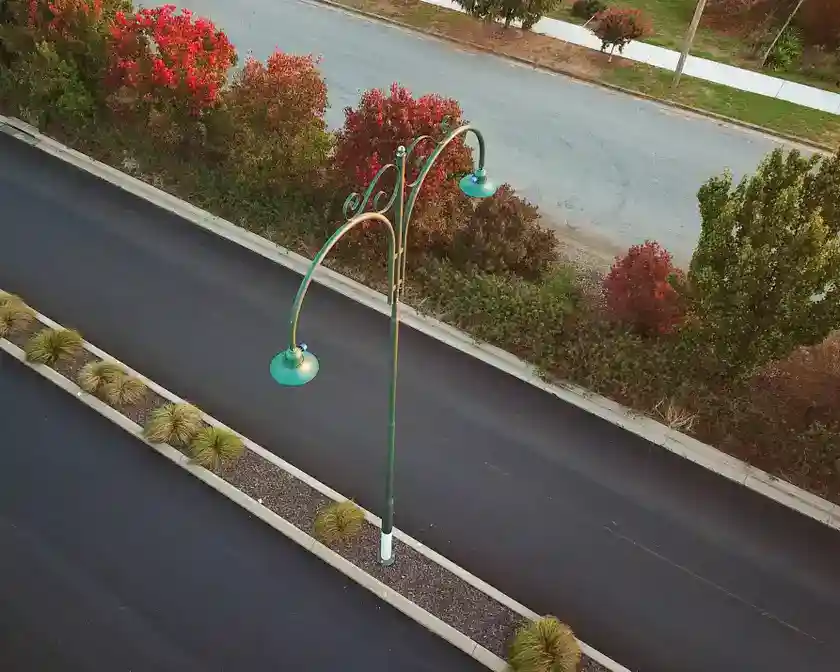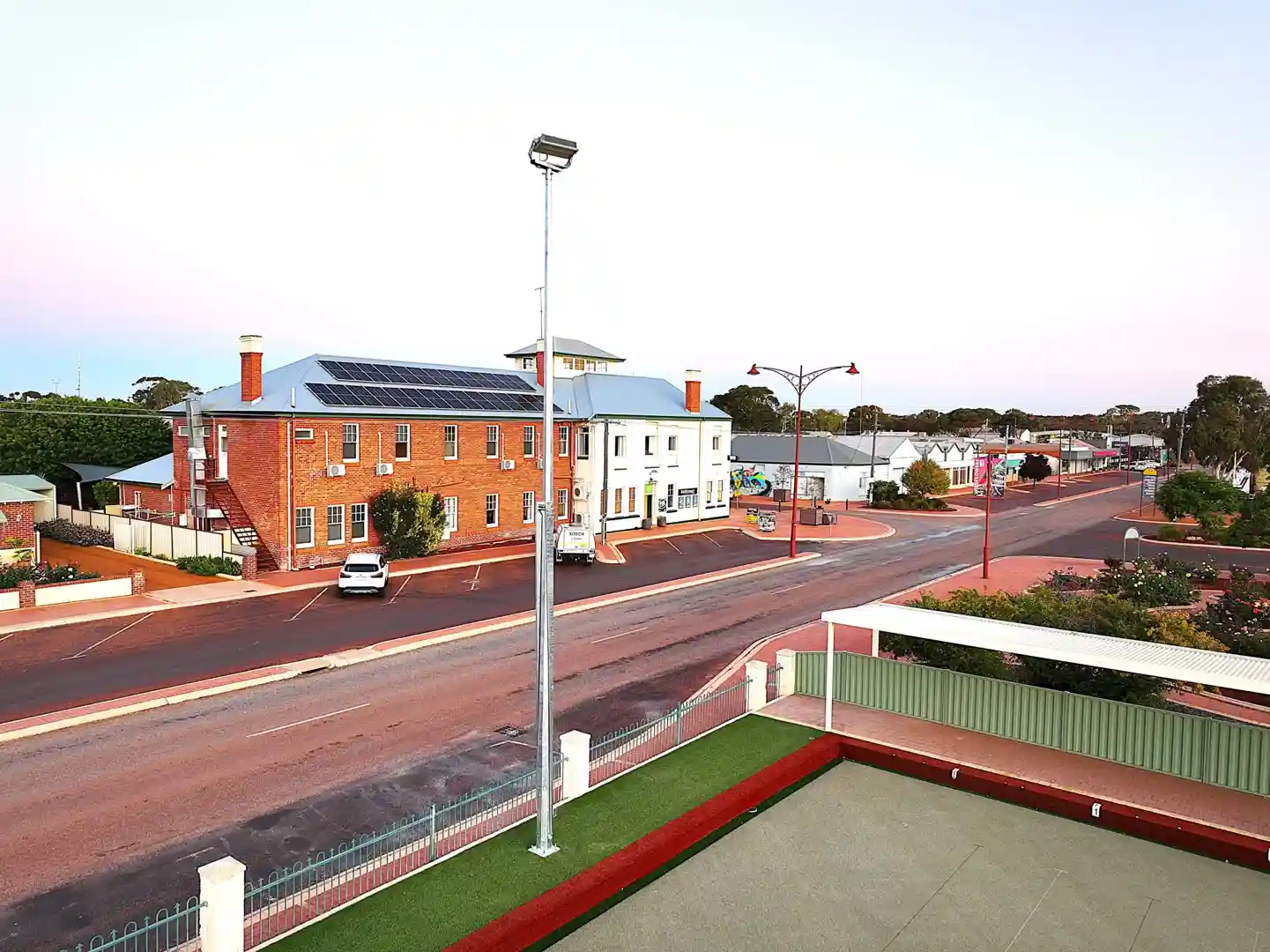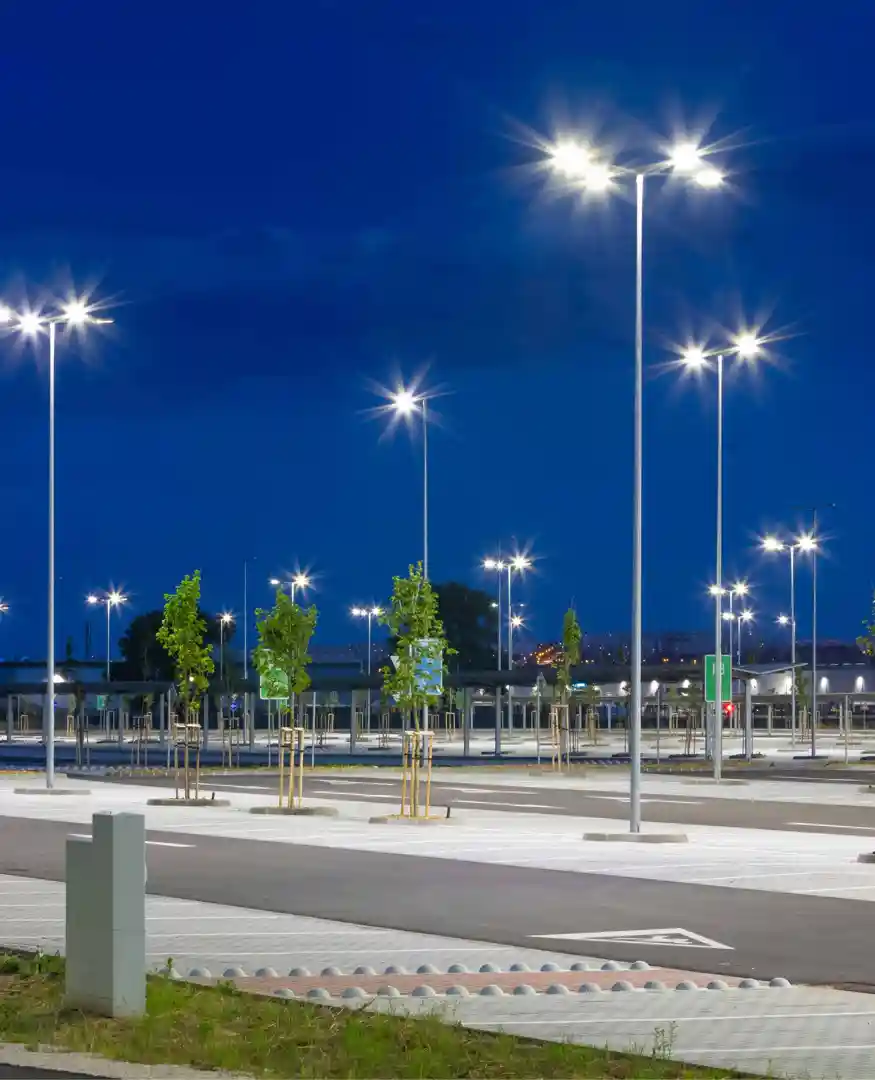Why Commercial Street Lamps Are Critical for Modern Australian Communities
Commercial street lamps are essential infrastructure that transform public spaces, ensuring safety, security, and community wellbeing across Australia's cities and towns. Whether you're planning roadway lighting, car park illumination, or pathway safety systems, understanding your options is crucial for long-term success.
Key Commercial Street Lamp Options:
- LED Street Lighting - Energy-efficient, long-lasting, 75% energy savings over traditional lighting
- Solar-Powered Systems - Zero grid electricity, ideal for off-grid and sustainable projects
- Smart Lighting Solutions - Remote monitoring, adaptive controls, automated operation
- Architectural Lighting - Decorative post-top and area lighting for urban precincts
The shift from outdated metal halide and high-pressure sodium lighting to advanced LED technology represents one of the most significant infrastructure upgrades available today. LED street lighting can save up to 75% on utility bills while delivering superior light quality and dramatically reduced maintenance requirements.
Modern commercial street lamps must meet Australian Standards (AS/NZS 1158), withstand harsh UV conditions, and provide consistent performance for decades. The choice between grid-tied and solar solutions depends on your site conditions, sustainability goals, and budget considerations.
Smart lighting technology now enables remote monitoring, adaptive dimming, and automated operation - changing basic illumination into intelligent infrastructure that responds to actual usage patterns and environmental conditions.
I'm Gavin Cook, Managing Director of Vizona, and I've spent over two decades delivering lighting solutions across Australia's most challenging projects, from the Snowy Hydro 2.0 renewable energy project to remote Indigenous community facilities. Our experience with commercial street lamps spans everything from Tier 1 infrastructure to local council upgrades, ensuring every solution meets Australian Standards while delivering lasting value.

Understanding the Fundamentals of Commercial Street Lamps
This section explains what commercial street lamps are and the key options available, providing a foundation before exploring technical details.
What Defines a Commercial Street Lamp?
When we talk about commercial street lamps, we're referring to lighting systems built for the long haul. These aren't your typical residential fixtures that might handle a few hours of evening use. Instead, they're engineered for constant operation in demanding environments where failure simply isn't an option.
The difference lies in their construction and purpose. Commercial street lamps need to deliver consistent illumination for roadways and highways, brighten up car parks and commercial areas, guide pedestrians along pathways and pedestrian zones, and create welcoming atmospheres in public squares and urban precincts. They also illuminate sports fields and recreational facilities where community life happens after dark, plus industrial zones and transport hubs where safety is paramount.
Australian conditions demand special attention. Our harsh UV radiation can degrade inferior materials within months, while coastal salt air corrodes standard fixtures. That's why our commercial street lamps feature UV-resistant materials that won't yellow or crack under intense Australian sun, wind-resistant engineering designed for cyclone-prone regions, and marine-grade corrosion protection for coastal installations.
Temperature extremes from -40°C to 45°C don't faze these systems. Whether it's a scorching summer day in the Pilbara or a frosty winter morning in the Snowy Mountains, reliable operation continues year-round.
Types of Commercial Street Lamps Offered by Vizona

LED technology has revolutionised street lighting, and our range reflects this evolution. Cobra head fixtures maintain the classic curved design that's been directing light onto roadways for decades, but now with LED efficiency that slashes energy bills by up to 75%. Shoebox lights offer the rectangular, no-nonsense approach perfect for car parks and large area lighting where uniform coverage matters most.
For spaces where aesthetics matter as much as function, post-top luminaires provide decorative appeal without sacrificing performance. These work beautifully in urban precincts and residential areas where community pride shows in every detail. Architectural lighting takes this further, with custom designs that complement heritage buildings and create distinctive urban character.
Solar-powered LED street lamps represent the future of sustainable infrastructure. These off-grid solutions shine in remote locations where running electrical cables would cost more than the entire lighting project. They're perfect for sustainable projects aiming for zero grid electricity consumption, serve as emergency lighting during power outages, and provide flexible temporary installations for construction sites and events.
Smart lighting technology transforms basic illumination into intelligent infrastructure. Remote monitoring lets you track performance across entire networks from your office, while adaptive controls automatically dim lights based on actual usage patterns. Automated operation through photocells and motion sensors means lights respond to conditions without human intervention, and integration-ready systems work seamlessly with broader smart city infrastructure.
Every solution meets Australian Standards (AS/NZS 1158) compliance, backed by comprehensive technical support from our Sydney and Perth offices. We don't just sell lighting – we ensure it works perfectly for your specific application and local conditions.
Key Technical Specifications to Consider When Choosing Commercial Street Lamps
Smart purchasing starts with a quick grasp of the few numbers that really matter.
1. Lumens, Watts & Efficiency
- Lumens = Brightness – how much useful light the fitting produces.
- Watts = Power Draw – how much electricity the fitting needs.
- Luminous efficacy (lm/W) – the ratio that shows efficiency.
Typical ranges for quality LED street lights:
| Application | Lumens | Power (approx.) |
|---|---|---|
| Pathways / local roads | 7,000–12,000 | 40–80 W |
| Major urban roads | 15,000–25,000 | 90–150 W |
| High-mast / highways | 25,000–42,000+ | 150–300 W |
Upgrading metal-halide or HPS to LED regularly cuts energy use by 60–75 % and removes most lamp-change call-outs.
2. Colour Temperature (CCT)
- 2700–3000 K – warm white, minimal blue light.
- 3000–4000 K – balanced "neutral" white; Vizona's default for most streets.
- 4000–5000 K – cool white for industrial sites only.
Keeping street lighting ≤ 4000 K protects sleep cycles, reduces sky-glow and is increasingly written into council policies.
3. Smart Controls
- Photocells – on at dusk, off at dawn.
- Motion / adaptive dimming – full brightness only when required (extra 30–50 % savings).
- Remote monitoring (DALI or wireless) – live status and fault alerts.
Vizona pre-configures control gear and provides AS/NZS 1158 simulations so councils know the design passes before poles go in.
Installation and Design: Factors Influencing Performance
Placement and design are as important as product selection. This section covers how height, spacing, and mounting affect results.
The Role of Pole Height and Spacing
Getting the height and spacing right for your commercial street lamps is like finding the perfect balance between coverage and cost. It's one of those technical decisions that can make or break your lighting project - and the good news is, there's a science to it.
The Height and Coverage Connection: When you install taller poles, you get wider light coverage, which means you need fewer poles overall. It sounds simple, but there's a catch - go too high and you might create dark spots between fixtures. Go too low and you'll need more poles, driving up your installation costs.
Understanding Typical Street Light Heights: Most residential streets work perfectly with poles between 6-8 metres high. Commercial areas typically need 8-12 metres to provide adequate coverage for larger spaces. Major roads require 12-15 metres, while highways often use 15-20 metres to cover multiple traffic lanes effectively.
Getting the Spacing Right: Here's a rule of thumb that works in most situations: your pole spacing should be 3-4 times the mounting height for optimal coverage. So if you're using 10-metre poles, space them 30-40 metres apart. This ensures uniform illumination without creating those annoying dark patches that can compromise safety.
Australian Standards Compliance: AS/NZS 1158 specifies minimum lighting levels and uniformity ratios that must be met. Our design team uses professional lighting software to model your specific site before installation, ensuring compliance and optimal performance. This upfront planning saves costly adjustments later.
Mounting Options for Versatility
The mounting system you choose determines how your commercial street lamps attach to poles and structures. Think of it as the foundation of your lighting system - get it wrong, and even the best fixture won't perform properly.
Understanding Your Mounting Choices: Slip fitter mounts slide directly over the pole top and work with standard 60-76mm diameter poles. They're the most common choice for traditional street lighting applications. Yoke mounts use an adjustable bracket system with 180-degree pivot capability, perfect when you need to direct light at specific angles.
Trunnion mounts attach to the side of poles or building walls, making them ideal for architectural applications or when you need to retrofit existing structures. Direct arm mounts integrate with the pole arm design itself, creating a clean, streamlined appearance.
Installation Flexibility for Every Situation: Modern installations often use square poles for their contemporary aesthetic, while traditional round poles remain popular for heritage areas. Wall mounting opens up possibilities for building-mounted applications where traditional pole installation isn't practical.
Our mounting systems use marine-grade finishes and stainless steel hardware specifically chosen for Australian conditions. Whether you're dealing with coastal salt spray or inland temperature extremes, these systems are built to last decades without degradation.
Light Distribution Patterns (Optics)
The optics inside your commercial street lamps control where the light goes - and this makes all the difference between effective illumination and wasted energy. Understanding light distribution patterns helps you choose the right fixture for each specific application.
IESNA Light Distribution Types Explained: Type II distribution creates a narrow light pattern perfect for roadways and pedestrian paths where you need focused illumination. Type III distribution provides medium-width coverage ideal for general road lighting applications.
Type IV distribution spreads light wider, making it perfect for intersections and car parks where you need broad area coverage. Type V distribution creates circular light patterns ideal for area lighting applications like public squares or recreational facilities.
The Benefits of Proper Optics: When you match the right optics to your application, several good things happen. The light goes exactly where you need it, maximising useful illumination while minimising spill light that contributes to light pollution. Proper optics also control glare, improving visual comfort for drivers and pedestrians.
Each application has specific requirements, and our technical team provides guidance on optic selection based on your site requirements and compliance needs. This ensures you get optimal performance while meeting all relevant lighting standards.
Powering Your Commercial Street Lamps: Grid-Tied or Solar
Your power source drives cost, installation time, and sustainability outcomes.
Grid-Tied LED Lighting
- Uses existing mains supply – perfect for established suburbs or network upgrades.
- Lowest upfront fixture cost; no batteries to replace.
- Requires trenching and cabling in greenfield sites.
- Delivers up to 75 % energy savings versus legacy lamps and meets AS/NZS 1158.
Solar-Powered Commercial Street Lamps

- Zero grid electricity – ideal for remote roads, parks, or sustainability targets.
- Quick install – poles, panel, battery, and light arrive pre-wired; no trenching.
- Modern lithium batteries give 3–5 night autonomy and 10–15 year life.
- Higher capital cost, but grants and the lack of power bills often close the gap within a few years.
Near-zero grid consumption research
Vizona engineers both options to Australian conditions, supplying design files, footing cages, and after-sales support nationwide.
Regulations, Safety, and Sustainability
Australian Standards & Local Rules
- AS/NZS 1158 sets the baseline for light levels, uniformity and glare.
- Councils may add height limits, warmer CCT mandates, or heritage style requirements.
- Vizona supplies compliant photometrics and documentation with every quote.
Protecting Night Skies & Wildlife
- Full-cut-off optics prevent upward spill and sky-glow.
- Warm (≤ 3000 K) LEDs reduce blue light that disrupts fauna and human sleep.
- Recyclable aluminium housings support the circular economy.
- Turtle-friendly amber options available for sensitive coastal sites.
International Dark Sky Association
Longevity, Maintenance & Community Safety
- Quality LEDs run 50,000–100,000 h – that's 11-15 years at dusk-to-dawn duty.
- Remote fault alerts let crews fix issues before residents notice.
- Uniform, glare-controlled lighting lowers crash risk and discourages vandalism.
- Predictable maintenance cycles free up council budgets for other works.
Conclusion: Choosing the Right Lighting Solution for Your Project
The change from traditional street lighting to modern LED and solar technology isn't just an upgrade—it's a complete reimagining of how we illuminate our communities. Commercial street lamps have evolved from simple fixtures that turn on at night into intelligent infrastructure that adapts, conserves energy, and improves public safety.
Making the right choice for your project starts with understanding your specific needs. Grid-tied LED systems excel in urban environments where electrical infrastructure already exists, delivering immediate energy savings of up to 75% while providing consistent, reliable illumination. Solar-powered solutions shine in remote locations or sustainability-focused projects, eliminating ongoing electricity costs while reducing environmental impact.
The Critical Technical Decisions
Brightness and efficiency work hand in hand through luminous efficacy—the lumens per watt that determine how much light you get for your energy investment. Modern LED technology delivers exceptional efficiency, with commercial fixtures ranging from 7,000 lumens for small areas to over 42,000 lumens for major highways.
Colour temperature affects everything from visual comfort to environmental impact. The sweet spot of 3000K-4000K provides excellent visibility while minimising blue light emissions that can disrupt sleep patterns and affect wildlife. It's a technical choice with real-world consequences for community wellbeing.
Smart controls transform basic lighting into responsive infrastructure. Photocells ensure automatic operation, motion sensors provide adaptive brightness, and remote monitoring systems enable proactive maintenance. These features don't just save energy—they create lighting that works smarter, not harder.
Installation Factors That Make or Break Performance
Pole height and spacing determine coverage patterns and uniformity. Taller poles provide wider coverage but require careful consideration of glare and light distribution. The relationship between height and spacing follows proven formulas, but local conditions and compliance requirements add complexity that requires expert guidance.
Mounting options provide flexibility for different applications. Whether you need slip fitter mounts for standard poles, yoke mounts for adjustable positioning, or wall mounting for specific situations, the right mounting system ensures optimal performance and long-term reliability.
Light distribution patterns direct illumination where it's needed most. Type II optics work perfectly for roadways, while Type V provides circular coverage for area lighting. Getting this right eliminates dark spots and minimises light pollution—two outcomes that significantly impact project success.
Power Source Considerations
Grid-tied systems offer proven reliability with lower upfront costs but require electrical infrastructure and generate ongoing electricity bills. They're ideal for urban installations where consistent power is available and high-output lighting is essential.
Solar solutions eliminate grid dependency while providing environmental benefits, but they require higher initial investment and careful battery sizing for reliable autonomy. The technology has matured significantly, with modern lithium battery systems providing 3-5 night autonomy and 10-15 year lifespans.
Compliance and Sustainability
Australian Standards compliance isn't optional—it's essential for safety, performance, and legal requirements. AS/NZS 1158 sets specific requirements for illuminance levels, uniformity ratios, and glare control. Local council requirements add another layer of complexity with height restrictions, brightness limits, and aesthetic guidelines.
Environmental responsibility extends beyond energy efficiency to include dark sky compliance, wildlife protection, and sustainable materials. Full cutoff fixtures eliminate light pollution, while recyclable aluminium construction supports circular economy principles.
The Vizona Advantage
As an Australian-owned company with offices in Sydney and Perth, we understand the unique challenges of local conditions and requirements. Our approach combines technical expertise gained from over 20 years of lighting design experience with practical knowledge from major projects including Snowy Hydro 2.0 and Sydney Metro.
Comprehensive support sets us apart from simple suppliers. We provide lighting simulations, compliance documentation, and ongoing technical assistance throughout your project lifecycle. Our responsive quoting process often delivers same-day responses, even for complex requirements.
Sustainable solutions reflect our commitment to environmental responsibility. From recyclable aluminium poles to energy-efficient LED technology, every component is selected for long-term performance and minimal environmental impact.
Making Your Decision
The right commercial street lamps deliver decades of reliable performance while reducing energy costs and environmental impact. LED technology offers immediate benefits through energy savings and reduced maintenance, while solar solutions provide long-term sustainability for forward-thinking projects.
Consider your specific requirements: urban or remote location, existing infrastructure, sustainability goals, and budget constraints. Factor in long-term costs including energy consumption, maintenance requirements, and compliance obligations.
Whether you're upgrading existing infrastructure or planning new installations, quality commercial street lamps represent a significant investment in community safety, environmental responsibility, and long-term value. The technology exists to deliver exceptional performance—success depends on choosing the right solution for your specific needs.
Explore our complete range of street and area lighting solutions or contact our team for site-specific advice and design support. Let us help you illuminate your community with efficient, sustainable, and compliant lighting solutions that stand the test of time.

